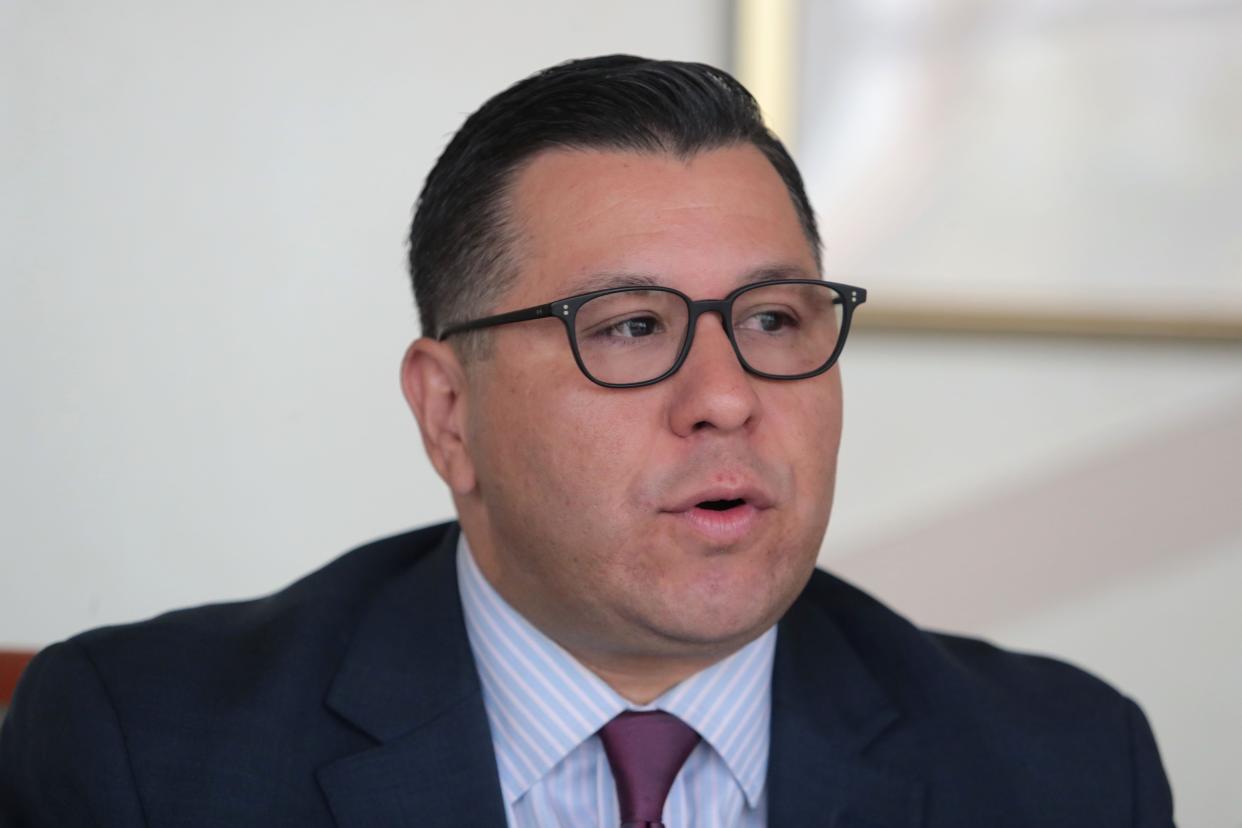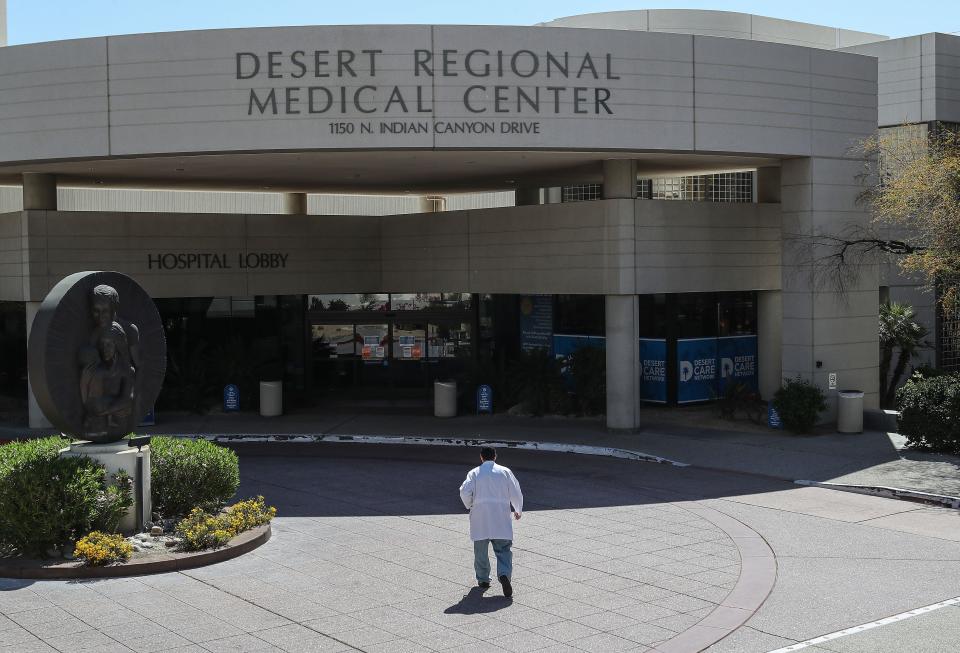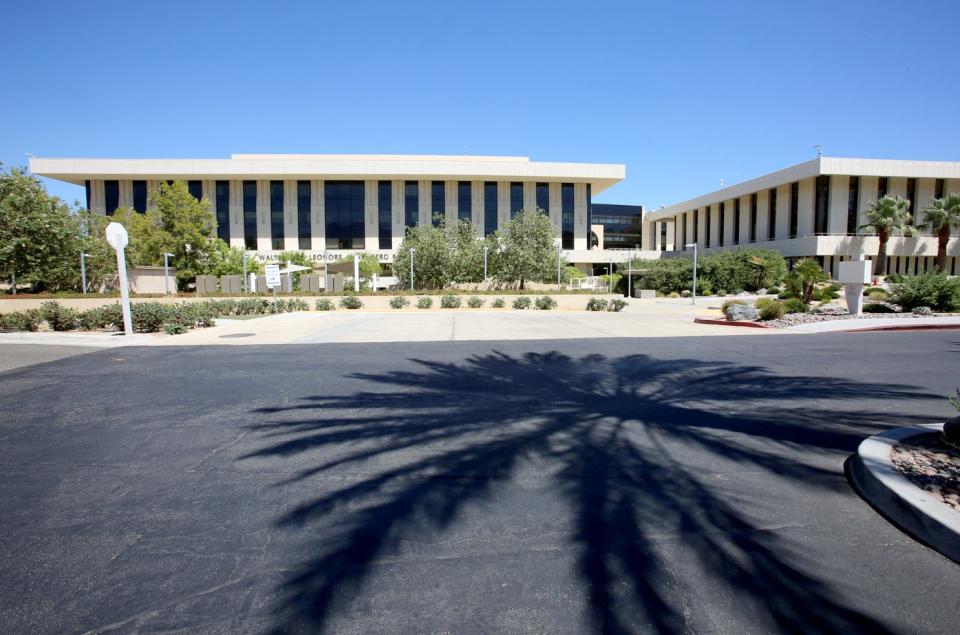Assemblymember Eduardo Garcia seeks $1B to help public district hospitals with seismic retrofits

As California hospitals prepare for seismic upgrades, Assemblymember Eduardo Garcia, D-Coachella, is hoping to secure a $1 billion state budget appropriation to ease costs for public district hospitals.
The Alquist Hospital Seismic Safety Act, or Senate Bill 1953, was established in 1995 in response to unexpected poor seismic performance of hospitals during the 1994 Northridge earthquake. California law mandates that all hospitals rebuild or retrofit by Jan. 1, 2030, and must remain fully functional in the event of an earthquake.
The next milestone for hospitals to complete is a full nonstructural engineering evaluation to be reviewed and approved by the California Department of Health Care Access and Information by January 2024.
"In light of the $97.5 billion budget surplus, the undersigned members of the California State Assembly and Senate respectfully request the inclusion of $1 billion for Public District Hospitals, for the purpose of meeting the 2030 Seismic Mandate," Garcia wrote in a May 19 letter addressed to the chairs of the state Assembly and Senate budget committees.
"This request seeks a one-time expenditure of $1 billion, in Fiscal Year 2022-23, for the 32 District Hospitals to fund new or ongoing infrastructure seismic compliance projects. Without this funding, these public hospitals will struggle to meet the deadline and face closures," he added.
Garcia told The Desert Sun on Wednesday that close to 20 legislators have voiced their support for the request. Negotiations between both state legislative houses and the executive office are currently underway.
"If we’re successful in getting a part of this current request, we’ll go back and make an additional request in the following budget cycle," Garcia said. "But what’s important to note is any allocation toward this will be a significant victory, and I think at that point we need to come up with some specific guidelines on how that money is distributed and looking at areas that are medically underserved."
The representative also hopes the effort could potentially open up other pathways available to secure federal funding for infrastructure improvements.
The Legislature has until June 15 to submit a revised balanced budget to Gov. Gavin Newsom for final approval.

Health care and hospital districts are special districts that are independent from city or county governments and typically serve rural, low-income areas that do not have ample access to medical care, according to the California Healthcare Foundation. Of the 76 healthcare districts in the state, 32 have hospitals, 17 of which are critical access, Garcia said in the letter.
The Desert Healthcare District serves 443,239 residents, on 2020 Census data, in the Coachella Valley. Desert Regional Medical Center in Palm Springs is owned by the district, while Tenet Healthcare operates the hospital.
In order for these districts to receive funding for projects, they must go to voters to approve a bond or tax or to leverage government financing.
"These initiatives often fail, and given the current economy, are likely to remain unsuccessful," Garcia wrote in his letter. "With no additional revenue or support, District Hospitals struggle to even secure financing to begin these projects. Additionally, as public entities they must already pay prevailing wage, which significantly increases the costs of these projects."
The Desert Healthcare District estimates the cost to meet retrofit requirements at Desert Regional to be $119 million to $180 million, which includes estimates of soft costs associated with professional fees, inspection and other items.
Desert Healthcare District CEO Dr. Conrado Bárzaga said Garcia's proposal to state lawmakers is crucial, especially for the 17 critical access hospitals.
"Those are hospitals located in rural California and communities where there is very high levels of poverty. It would be impossible for those districts and hospitals to raise the capital through new taxes to do those seismic retrofits," the CEO said. "That is pretty much forcing many of those hospitals to close down, and that would be a significant loss for the California health care infrastructure."
If the $1 billion cannot be secured in time, Bárzaga said the district "will have to look into every financial alternative that there is."
Desert Regional retrofit plans
Structural seismic retrofits are needed at three buildings — the main hospital and additions, east tower and north wing — and nonstructural retrofits at 20 buildings at Desert Regional's campus, according to a 2019 report from engineering firm Simpson Gumpertz & Heger Inc.
In the main hospital, retrofit options include thickening deficient walls and replacing steel braced frames with reinforced concrete walls. The engineering company identified deficiencies in the east tower with chord and collector connections, frame beams and connections and foundations. Similarly, there are issues between beams and walls in the north wing.
The direct construction costs for structural retrofits at these three sites total $56,553,186. But accounting for general conditions, general requirements, insurance, fee, a 10% contingency and a 20% escalation (based on starting construction after 2024), the cost comes to $92,954,297.
Nonstructural retrofit efforts that need to be made include upgrading fire sprinkler systems in a few buildings. Evaluation reports will need to be completed for several of the older buildings on the Desert Regional campus.
Bárzaga said the district has met "every deadline that has been laid out for hospitals and we're presenting our findings, our recommendations, our plans to make sure the state of California knows we're doing everything that they're asking of us."
Hospital spokesperson Richard Ramhoff said in a statement, "we continue to work closely with the district on engineering studies, surveys, and assessments as we collectively approach the Jan. 1, 2030, seismic compliance deadline.”
Garcia told The Desert Sun that conversations with the district have been "very helpful to put things into perspective" in regards to the allocation proposal.

Another component that the health care district has to consider is its 30-year lease with Tenet, which runs out in 2027.
Bárzaga said initial conversations about renewing the lease took place before the pandemic, but were put on hold over the last two years. Those conversations are being renewed, he said.
"We have an oversight role, but we have to make it clear that the infrastructure is ours, that hospital belongs to the health care district. It is ultimately our responsibility to ensure that this remains a valuable public asset for our community, and Tenet has its responsibility," Bárzaga said. "When they assumed the operation of the hospital, they assumed meeting every requirement, any regulation that the state of California enacts ... as long as they're operating the hospital."
If a new lease agreement is made between the Desert Healthcare District and Tenet Healthcare, district voters will "ultimately have the opportunity to weigh in and approve or not approve that transaction," the CEO said.
Status of other area hospitals
Nonpublic hospitals in the desert do not depend on taxpayer money or government funds to complete seismic retrofits.
In 2015, through donations by Dennis and Phyllis Washington and other Eisenhower Health donors, the Rancho Mirage hospital began the process of seismically retrofitting its original hospital building. There were also projects done at the Walter and Leonore Annenberg Pavilion, which addressed bed replacement in response to seismic requirements, and the emergency department and Renker Pavilion, which included some seismic retrofits, spokesperson Lee Rice said. The total cost of the projects was $300 million.
Rice said Eisenhower Health met 2020 requirements of SB 1953 — which involved retrofitting the highest risk buildings by 2020 — nearly two years ahead of schedule.
"The main hospital building was retrofitted to meet the requirements and will remain an inpatient services building until 2030," Lee said in a statement. "All beds have been removed from the building and only a handful of other services remain that will be moved to other parts of the hospital by 2030. The main hospital building would continue as an outpatient services building post 2030."
Nonstructural seismic retrofits still need to be completed at the main hospital.
Hi-Desert Medical Center in Joshua Tree and JFK Memorial Hospital in Indio, also operated by Tenet Healthcare, continue to work toward meeting the next phase of the seismic mandates, which is the January 2024 deadline for the nonstructural engineering evaluation.
"We do not yet have a final project scope or cost estimate. However, both hospitals are less complex buildings than Desert Regional, and both are predominantly one-story facilities," Ramhoff said. "We do not expect the work to be anywhere close to the scale of upgrades for Desert Regional. Our company will fund the capital improvements needed to meet seismic requirements.”
Ema Sasic covers health in the Coachella Valley. Reach her at ema.sasic@desertsun.com or on Twitter @ema_sasic.
This article originally appeared on Palm Springs Desert Sun: Assemblymember Eduardo Garcia seeks $1B for hospital seismic retrofits

